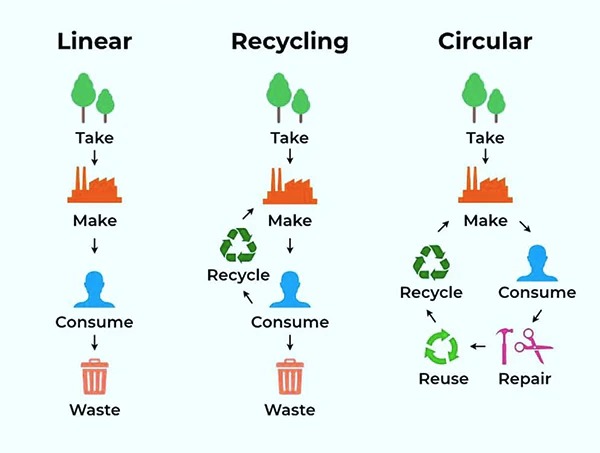Brief introduction to the terms and principles of the circular economy
Recycling and reuse are two key concepts in the textile industry, both having a significant impact on the environment and the economy. While recycling involves transforming used materials into new textile products, reuse focuses on reusing garments and textiles without processing them. The choice between recycling and reuse can depend on a number of factors, including the condition of the material, economic viability and environmental impact.
Environmental Impact
Recycling textile materials can significantly reduce waste going to energy recovery or landfill, saving natural resources and minimizing pollution. By converting textile waste into new products, it reduces the need for new raw materials, which has a positive impact on the environment.
On the other hand, the reuse of clothing and textiles has immediate advantages in terms of resource conservation. Re-use does not require energy-intensive processes and can significantly reduce textile waste. By donating or selling used clothing that is in good condition, it extends the life of products and minimizes environmental impact.
Economic viability
From an economic perspective, reuse can be more advantageous than recycling, as the costs associated with collecting, processing and transforming materials are significantly reduced. Second-hand clothing markets and online sales platforms have been growing, highlighting the popularity and cost-effectiveness of reusing textiles.
Although recycling can be costly, it offers opportunities for innovation and new product development. The textile industry is increasingly exploring the use of advanced technologies to improve the efficiency of recycling processes, which can open up new markets and stimulate economic growth.
Social implications
Re-using clothes also has important social implications, promoting responsible consumption and raising awareness of the impact of the textile industry on the environment. Re-use initiatives can encourage communities to engage in sustainability actions and support the circular economy.
Recycling, by generating new jobs in collection, sorting and processing, can have a positive social impact, contributing to the development of local communities.
Conclusion
Both recycling and reuse in the textile industry have their essential roles in promoting sustainability and reducing negative environmental impacts. The choice between the two depends on multiple considerations, including material condition, cost and environmental benefits. To maximize positive impacts, it is essential to adopt a balanced approach that incorporates both strategies within a circular economy model. Encouraging consumers to adopt more sustainable practices, such as buying second-hand clothes or participating in recycling programs, can make a significant contribution to making the textile industry more environmentally responsible.

